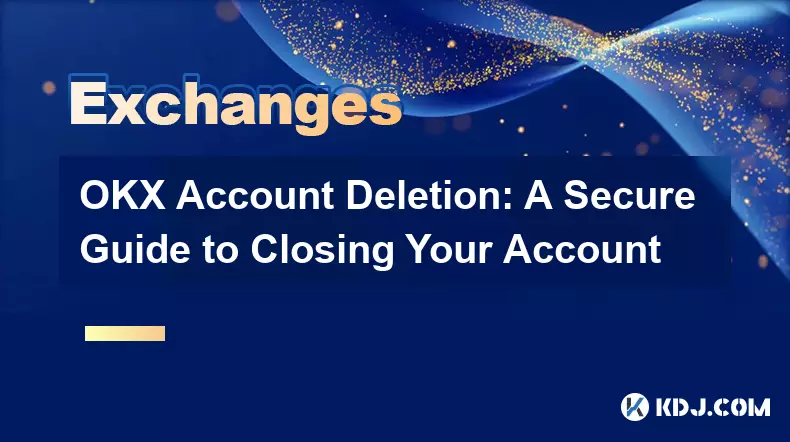-
 bitcoin
bitcoin $99177.955738 USD
-7.32% -
 ethereum
ethereum $3187.183061 USD
-12.38% -
 tether
tether $0.999809 USD
0.00% -
 xrp
xrp $2.117933 USD
-9.42% -
 bnb
bnb $906.710033 USD
-9.17% -
 solana
solana $149.367737 USD
-10.74% -
 usd-coin
usd-coin $0.999816 USD
0.01% -
 tron
tron $0.281498 USD
-0.38% -
 dogecoin
dogecoin $0.156292 USD
-8.00% -
 cardano
cardano $0.500744 USD
-10.19% -
 hyperliquid
hyperliquid $38.087358 USD
-4.58% -
 chainlink
chainlink $14.097831 USD
-8.54% -
 bitcoin-cash
bitcoin-cash $463.329916 USD
-9.22% -
 ethena-usde
ethena-usde $0.999078 USD
-0.01% -
 unus-sed-leo
unus-sed-leo $9.475862 USD
-0.79%
Advanced Security Features on Coinbase: A Deep Dive for Pro Users.
Coinbase enforces mandatory MFA for high-risk actions like withdrawals, ensuring continuous identity verification and reducing unauthorized access risks.
Nov 04, 2025 at 07:00 pm

Understanding Multi-Factor Authentication in Depth
1. Coinbase implements a robust multi-factor authentication (MFA) system that goes beyond standard SMS-based verification. Users can integrate time-based one-time passwords (TOTP) using authenticator apps like Google Authenticator or Authy, significantly reducing the risk of SIM-swapping attacks.
2. The platform allows users to register multiple MFA devices, enabling seamless access during device transitions without compromising account integrity. This redundancy ensures continuous protection even when primary devices are lost or replaced.
3. Hardware security keys such as YubiKey are fully supported, providing phishing-resistant authentication through FIDO2/WebAuthn standards. This feature is especially critical for pro traders managing large portfolios vulnerable to targeted social engineering.
4. Each login attempt triggers real-time notifications across all registered devices, allowing immediate detection of unauthorized access attempts. Users can revoke suspicious sessions directly from the security dashboard.
5. Coinbase enforces mandatory MFA re-verification for high-risk actions, including withdrawal requests and email changes, ensuring persistent identity validation throughout the session lifecycle.
Advanced Wallet Protection Mechanisms
1. Pro users benefit from Coinbase’s vault technology, which introduces delayed withdrawals and mandatory waiting periods for fund movements. These delays act as a buffer against rapid exploitation during potential breaches.
2. Vault accounts support multi-signature authorization, requiring approvals from multiple pre-defined devices or team members before transactions are executed. This is particularly effective for institutional investors and trading groups.
3. Geofencing capabilities allow users to restrict transaction origins to specific geographic regions. Any attempt to initiate transfers from blacklisted locations is automatically blocked and flagged for review.
4. Transaction whitelisting enables users to pre-approve destination addresses for crypto withdrawals. Unlisted addresses trigger additional verification layers, minimizing the impact of compromised credentials.
5. Real-time anomaly detection algorithms monitor behavioral patterns, flagging deviations such as sudden spikes in transfer volume or atypical login times, prompting immediate security challenges.
Institutional-Grade Security Infrastructure
1. Coinbase stores over 98% of user assets in offline cold storage systems, physically isolated from internet-connected networks. These systems are protected by biometric access controls and 24/7 surveillance at geographically dispersed facilities.
2. The platform utilizes end-to-end encryption for all data transmissions, employing TLS 1.3 and AES-256 protocols to safeguard sensitive information during transit and at rest.
3. Regular third-party penetration testing and audits by firms like Trail of Bits ensure compliance with SOC 2 Type II and ISO 27001 standards, reinforcing trust among professional traders.
4. Dedicated IP whitelisting and API key permissions allow pro users to restrict access to trading bots and automated strategies, reducing attack surface exposure from misconfigured integrations.
5. Coinbase Pro offers granular session management, enabling users to view active connections, terminate remote sessions, and rotate API credentials instantly through the security interface.
Frequently Asked Questions
How does Coinbase handle recovery if a hardware key is lost?Users must complete a rigorous identity re-verification process involving government-issued ID, proof of address, and historical account activity analysis. Backup MFA methods previously registered can also be used to regain access under strict monitoring.
Can I disable SMS-based authentication entirely on my pro account?Yes, Coinbase allows full deactivation of SMS authentication. Users are encouraged to replace it with authenticator apps or hardware keys, both of which offer superior resistance to interception and porting attacks.
What happens when an anomalous login is detected?The system immediately freezes transaction capabilities and sends alerts across all verified devices. Access is only restored after successful re-authentication via primary MFA method and manual confirmation from the user.
Are API keys encrypted when stored by Coinbase?All API keys are hashed and encrypted using industry-standard cryptographic practices. They are never stored in plaintext and are only accessible during initial creation, ensuring long-term confidentiality.
Disclaimer:info@kdj.com
The information provided is not trading advice. kdj.com does not assume any responsibility for any investments made based on the information provided in this article. Cryptocurrencies are highly volatile and it is highly recommended that you invest with caution after thorough research!
If you believe that the content used on this website infringes your copyright, please contact us immediately (info@kdj.com) and we will delete it promptly.
- Bitcoin's Wild Ride: Saylor, Kiyosaki, and the Quest for $200K
- 2025-11-05 10:50:13
- Culex, Cardano, and Aster: A Crypto Cocktail of Mosquitoes, Dips, and CZ Fuel
- 2025-11-05 11:00:17
- Crypto Presales, Coin Growth, and Established Coins: Navigating the 2025 Buzz
- 2025-11-05 11:00:17
- La Culex, Crypto Investment, and Pudgy Penguins: A NYC Perspective
- 2025-11-05 10:30:13
- Zcash Defies Crypto Crash: Reversal Risk on the Horizon?
- 2025-11-05 11:00:01
- Score Big with BetMGM: NBA, NFL, and the TOP150 Bonus Code
- 2025-11-05 08:50:13
Related knowledge

Common Mistakes to Avoid on OKX: A Guide for New Traders
Nov 04,2025 at 03:37pm
Understanding the Interface Before Trading1. New traders often jump into placing orders without fully exploring the OKX platform layout. Taking time t...

OKX TradingView Integration: A Guide to Advanced Chart Analysis
Nov 02,2025 at 03:37am
OKX and TradingView: Bridging the Gap for Professional Traders1. OKX, one of the leading cryptocurrency exchanges, has integrated with TradingView to ...

Finding Your OKX Deposit Address: A Quick and Safe Guide
Nov 05,2025 at 01:15pm
Finding Your OKX Deposit Address: A Step-by-Step Process1. Log into your OKX account using your registered credentials. Ensure you are accessing the o...

OKX Savings Guide: A Low-Risk Strategy for Earning Crypto
Nov 05,2025 at 06:55am
Understanding OKX Savings and Its Role in Crypto Earnings1. OKX Savings offers users a straightforward method to earn passive income by leveraging idl...

OKX Account Deletion: A Secure Guide to Closing Your Account
Nov 05,2025 at 08:44am
Understanding the Implications of Account Closure1. Closing your OKX account permanently removes access to all associated trading features, including ...

Mastering the OKX Mobile App: Tips for Trading on the Go
Nov 05,2025 at 01:19am
Streamlined Navigation for Efficient Trading1. The OKX mobile app features a clean and intuitive interface that allows traders to access key functions...

Common Mistakes to Avoid on OKX: A Guide for New Traders
Nov 04,2025 at 03:37pm
Understanding the Interface Before Trading1. New traders often jump into placing orders without fully exploring the OKX platform layout. Taking time t...

OKX TradingView Integration: A Guide to Advanced Chart Analysis
Nov 02,2025 at 03:37am
OKX and TradingView: Bridging the Gap for Professional Traders1. OKX, one of the leading cryptocurrency exchanges, has integrated with TradingView to ...

Finding Your OKX Deposit Address: A Quick and Safe Guide
Nov 05,2025 at 01:15pm
Finding Your OKX Deposit Address: A Step-by-Step Process1. Log into your OKX account using your registered credentials. Ensure you are accessing the o...

OKX Savings Guide: A Low-Risk Strategy for Earning Crypto
Nov 05,2025 at 06:55am
Understanding OKX Savings and Its Role in Crypto Earnings1. OKX Savings offers users a straightforward method to earn passive income by leveraging idl...

OKX Account Deletion: A Secure Guide to Closing Your Account
Nov 05,2025 at 08:44am
Understanding the Implications of Account Closure1. Closing your OKX account permanently removes access to all associated trading features, including ...

Mastering the OKX Mobile App: Tips for Trading on the Go
Nov 05,2025 at 01:19am
Streamlined Navigation for Efficient Trading1. The OKX mobile app features a clean and intuitive interface that allows traders to access key functions...
See all articles










































































